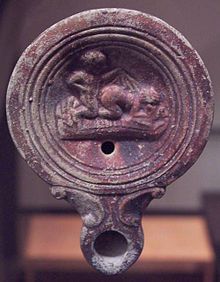A GUIDE FOR FINANCIAL FRAUD INVESTIGATION & PRECAUTION, SHIVANI SHARMA [read my book txt] 📗

- Author: SHIVANI SHARMA
Book online «A GUIDE FOR FINANCIAL FRAUD INVESTIGATION & PRECAUTION, SHIVANI SHARMA [read my book txt] 📗». Author SHIVANI SHARMA
Irrespective of the legal or social view of pornography, it has been used in a number of contexts. It is used, for example, at fertility clinics to stimulate sperm donors. Some couples use pornography at times for variety and to create a sexual interest or as part of foreplay. There is also some evidence that pornography can be used to treat voyeurism.
Etymology
The word pornography was coined from the ancient Greek words πόρνη (pórnē "prostitute" and πορνεία porneía "prostitution"[12]), and γράφειν (gráphein "to write or to record", derived meaning "illustration", as in "graph"), and the suffix -ία (-ia, meaning "state of", "property of", or "place of"), thus meaning "a written description or illustration of prostitutes or prostitution". No date is known for the first use of the word in Greek; the earliest attested, most related word one could find in Greek, is πορνογράφος, pornográphos, i.e. "someone writing about harlots", in the Deipnosophists of Athenaeus.[13][14] The Modern Greek word pornographia (πορνογραφία) is a reborrowing of the French pornographie.[15]
"Pornographie" was in use in the French language during the 1800s. The word did not enter the English language as the familiar word until 1857[16] or as a French import in New Orleans in 1842.[17] The word was originally introduced by classical scholars as "a bookish, and therefore nonoffensive, term for writing about prostitutes",[18] but its meaning was quickly expanded to include all forms of "objectionable or obscene material in art and literature".[18] As early as 1864, Webster's Dictionary defined the word bluntly as "a licentious painting".[18] The more inclusive word erotica, sometimes used as a synonym for "pornography", is derived from the feminine form of the ancient Greek adjective ἐρωτικός (erōtikós), derived from ἔρως (érōs), which refers to lust and sexual love.[18]
Pornography is often abbreviated to porn or porno in informal language.
For the term in horror films, see torture porn.HistoryFurther information: History of erotic depictions
Depictions of a sexual nature have existed since prehistoric times, as seen in the Venus figurines and rock art.[19] A vast number of artifacts have been discovered from ancient Mesopotamia depicting explicit heterosexual sex.[20][21] Glyptic art from the Sumerian Early Dynastic Period frequently shows scenes of frontal sex in the missionary position.[20] In Mesopotamian votive plagues from the early second millennium BC, the man is usually shown entering the woman from behind while she bends over, drinking beer through a straw.[20]Middle Assyrian lead votive figurines often represent the man standing and penetrating the woman as she rests on top of an altar.[20] Scholars have traditionally interpreted all these depictions as scenes of ritual sex,[20] but they are more likely to be associated with the cult of Inanna, the goddess of sex and prostitution.[20] Many sexually explicit images were found in the temple of Inanna at Assur,[20] which also contained models of male and female sexual organs.[20]
Depictions of sexual intercourse were not part of the general repertory of ancient Egyptian formal art,[22] but rudimentary sketches of heterosexual intercourse have been found on pottery fragments and in graffiti.[22] The final two thirds of the Turin Erotic Papyrus (Papyrus 55001), an Egyptian papyrus scroll discovered at Deir el-Medina,[23][22] consist of a series of twelve vignettes showing men and women in various sexual positions.[23] The scroll was probably painted in the Ramesside period (1292-1075 BC)[23] and its high artistic quality indicates that was produced for a wealthy audience.[23] No other similar scrolls have yet been discovered.[22]
 Oil lamp artifact depicting coitus more ferarum
Oil lamp artifact depicting coitus more ferarum
Fanny Hill (1748) is considered "the first original English prose pornography, and the first pornography to use the form of the novel."[24] It is an erotic novel by John Cleland first published in England as Memoirs of a Woman of Pleasure.[25][26] It is one of the most prosecuted and banned books in history.[27] The authors were charged with "corrupting the King's subjects."
When large-scale excavations of Pompeii were undertaken in the 1860s, much of the erotic art of the Romans came to light, shocking the Victorians who saw themselves as the intellectual heirs of the Roman Empire. They did not know what to do with the frank depictions of sexuality and endeavored to hide them away from everyone but upper-class scholars. The moveable objects were locked away in the Secret Museum in Naples and what could not be removed was covered and cordoned off as to not corrupt the sensibilities of women, children, and the working classes.[28]
After the modern invention of photography, the photographic pornography was also born. The parisian demimonde included Napoleon III's minister, Charles de Morny, who was an early patron that displayed photos at large gatherings.[29]
The world's first law criminalizing pornography was the English Obscene Publications Act 1857 enacted at the urging of the Society for the Suppression of Vice.[30] The Act, which applied to the United Kingdom and Ireland, made the sale of obscene material a statutory offence, giving the courts power to seize and destroy offending material. The American equivalent was the Comstock Act of 1873[31][32] which made it illegal to send any "obscene, lewd, and/or lascivious" materials through the mail. The English Act did not apply to Scotland, where the common law continued to apply. However, neither the English nor the United States Act defined what constituted "obscene", leaving this for the courts to determine. Before the English Act, the publication of obscene material was treated as a common law misdemeanour[33] and effectively prosecuting authors and publishers was difficult even in cases where the material was clearly intended as pornography. Although nineteenth-century legislation eventually outlawed the publication, retail, and trafficking of certain writings and images regarded as pornographic and would order the destruction of shop and warehouse stock meant for sale, the private possession of and viewing of (some forms of) pornography was not made an offence until the twentieth century.[34]
Historians have explored the role of pornography in social history and the history of morality.[35]
The Victorian attitude that pornography was for a select few can be seen in the wording of the Hicklin test stemming from a court case in 1868 where it asks, "whether the tendency of the matter charged as obscenity is to deprave and corrupt those whose minds are open to such immoral influences." Although they were suppressed, depictions of erotic imagery were common throughout history.[36]
Pornographic film production commenced almost immediately after the invention of the motion picture in 1895. Two of the earliest pioneers were Eugène Pirou and Albert Kirchner. Kirchner directed the earliest surviving pornographic film for Pirou under the trade name "Léar". The 1896 film Le Coucher de la Mariée showed Louise Willy performing a striptease. Pirou's film inspired a genre of risqué French films showing women disrobing and other filmmakers realised profits could be made from such films.[37][38]
Sexually explicit films opened producers and distributors to prosecution. Those that were made were produced illicitly by amateurs starting in the 1920s, primarily in France and the United States. Processing the film was risky as was their distribution. Distribution was strictly private.[39][40] In 1969, Denmark became the first country to abolish censorship, thereby decriminalizing pornography, which led to an explosion in investment and of commercially produced pornography. However, it continued to be banned in other countries, and had to be smuggled in, where it was sold "under the counter" or (sometimes) shown in "members only" cinema clubs.[39] Nonetheless, and also in 1969, Blue Movie by Andy Warhol, was the first adult erotic film depicting explicit sex to receive wide theatrical release in the United States.[3][4][5] The film was a seminal film in the Golden Age of Porn and, according to Warhol, a major influence in the making of Last Tango in Paris, an internationally controversial erotic drama film, starring Marlon Brando, and released a few years after Blue Movie was made.[4]
Data suggests an increase in pornography viewing over the past few decades, and this has been attributed to the growth of Internet pornography since widespread public access to the World Wide Web in the late 1990s.[41] Through the 2010s, many pornographic production companies and top pornographic websites





Comments (0)